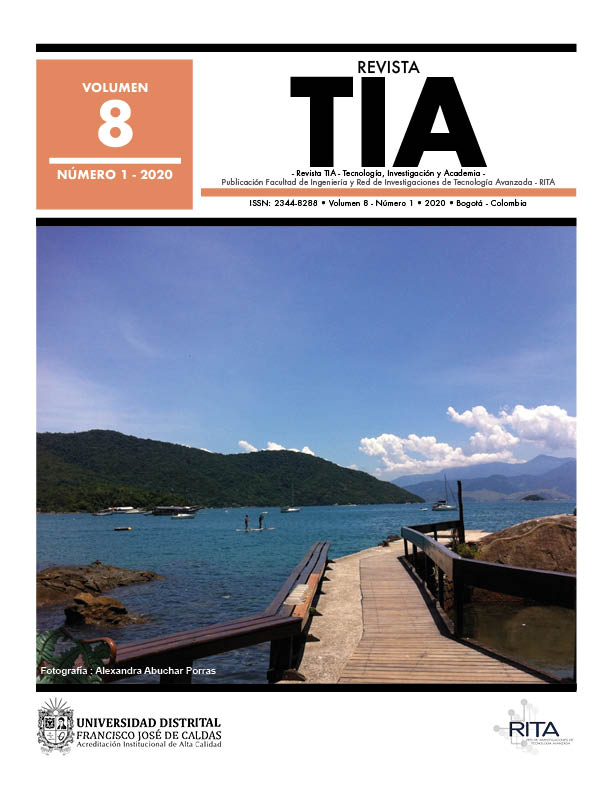Publicado:
2021-06-26 — Actualizado el 2021-07-27Versiones
- 2021-07-27 (5)
- 2021-07-27 (4)
- 2021-07-27 (3)
- 2021-07-27 (2)
- 2021-06-26 (1)
Número:
Vol. 8 Núm. 1 (2020): Enero-Agosto 2020Sección:
InvestigaciónGamificación para el aprendizaje de arquitecturas empresariales dentro de una entidad privada.
A vision of gamification as a starting point for learning business architectures within a private entity.
Palabras clave:
Gamification, Enterprise Architecture, Taxonomy, Model, Software Engineer (en).Palabras clave:
Gamificación, Arquitectura Empresarial, Taxonomía, Modelo, Ingenieria de Software (es).Descargas
Resumen (es)
La gamificación ha sido ampliamente utilizada para mejorar los procesos de aprendizaje en diferentes sectores pedagógicos, esto ha redundado en múltiples beneficios para los entornos de aprendizaje colaborativo, factor que hace treinta años no se exploraba tanto, ha encontrado su auge en los modelos educativos externalizados, en línea, incluso presenciales, permitiendo obtener el mayor valor de las herramientas que cada persona tiene a su disposición.
El objetivo de este estudio se centra en tener una visión más clara sobre los procesos arquitectónicos en el software y la infraestructura tecnológica, que permitan brindar soluciones, reduciendo los tiempos de capacitación y la curva de aprendizaje, en este contexto se busca que mediante técnicas interactivas la población seleccionada encargada de ejecutar este tipo de tareas amplíe su capacidad de recolección de información.
Teniendo en cuenta lo anterior, se espera poder reunir suficiente información para continuar ejecutando diferentes estudios y actividades en torno a la arquitectura de software, lo que se traducirá en un mayor porcentaje de aprendizaje colaborativo en las arquitecturas empresariales.
Resumen (en)
The gamification has been widely used to improve the learning processes in different pedagogical sectors, this has resulted in multiple benefits for collaborative learning environments, a factor that thirty years ago was not so explored, has found its rise in outsourced educational models, online, even face to face, allowing to obtain the greatest value of the tools that each person has at their disposal.
The objective of this study is focused on having a clearer vision regarding the architectural processes in the software and technological infrastructure, which allow providing solutions, reducing training times and learning curve, in this context it is sought that by means of interactive techniques the selected population in charge of executing this type of tasks expand their capacity to collect information.
Taking into account the above, it is expected to be able to collect enough information to continue executing different studies and activities around the software architecture, resulting in a higher percentage of collaborative learning on enterprise architectures.
Referencias
Conaway, R., Garay, M.C. Gamification and service marketing. SpringerPlus 3, 653 (2014). https://doi.
org/10.1186/2193-1801-3-653
Katie Seaborn, Deborah I. Fels, Gamification in theory and action: A survey, International Journal of
Human-Computer Studies, Volume 74, 2015, Pages 14-31, ISSN 1071-5819, https://doi.org/10.1016/j.
ijhcs.2014.09.006.
Toda, A.M., Klock, A.C.T., Oliveira, W. et al. Analysing gamification elements in educational environments
using an existing Gamification taxonomy. Smart Learn. Environ. 6, 16 (2019). https://doi.org/10.1186/
s40561-019-0106-1
Knutas, A., van Roy, R., Hynninen, T. et al. A process for designing algorithm-based personalized gamification.
Multimed Tools Appl 78, 13593–13612 (2019). https://doi.org/10.1007/s11042-018-6913-5
Smiderle, R., Rigo, S.J., Marques, L.B. et al. The impact of gamification on students’ learning, engagement
and behavior based on their personality traits. Smart Learn. Environ. 7, 3 (2020). https://doi.org/10.1186/
s40561-019-0098-x
Modelo arquitectura empresarial. Disponible en: https://i.pinimg.com/
originals/23/30/9c/23309cf3888fc75104694ada93f244f7.png
Bovermann, K., Bastiaens, T. Towards a motivational design? Connecting gamification user types and online
learning activities. RPTEL 15, 1 (2020). https://doi.org/10.1186/s41039-019-0121-4
Ab. Rahman, R., Ahmad, S. & Hashim, U.R. The effectiveness of gamification technique for higher education
students engagement in polytechnic Muadzam Shah Pahang, Malaysia. Int J Educ Technol High Educ 15, 41
(2018). https://doi.org/10.1186/s41239-018-0123-0
Barata, G., Gama, S., Jorge, J. et al. Gamification for smarter learning: tales from the trenches. Smart Learn.
Environ. 2, 10 (2015). https://doi.org/10.1186/s40561-015-0017-8
Pesare, E., Roselli, T., Corriero, N. et al. Game-based learning and Gamification to promote engagement and
motivation in medical learning contexts. Smart Learn. Environ. 3, 5 (2016). https://doi.org/10.1186/s40561-
-0028-0
Dichev, C., Dicheva, D. Gamifying education: what is known, what is believed and what remains uncertain:
a critical review. Int J Educ Technol High Educ 14, 9 (2017). https://doi.org/10.1186/s41239-017-0042-5
Schilling, M. a., Vidal, P., Ployhart, R. E., & Marangoni, A. (2003). Learning by Doing Something Else:
Variation, Relatedness, and the Learning Curve. Management Science, 49 (1), 39-56. doi: http://doi.
org/10.1287/mnsc.49.1.39.12750
Schnabel, Marc Aurel & Lo, Tian Tian & Aydin, Serdar. (2014). Gamification and Rule Based Design
Strategies in Architecture Education. https://www.researchgate.net/publication/269038257_Gamification_
and_Rule_Based_Design_Strategies_in_Architecture_Education 10.13140/2.1.5150.3689.
Saqib Hakak, Nurul Fazmidar Mohd Noor, Mohamad Nizam Ayub, Hannyzurra Affal, Nornazlita Hussin,
Ejaz ahmed, Muhammad Imran,Cloud-assisted gamification for education and learning – Recent advances
and challenges,Computers & Electrical Engineering, Volume 74, 2019, Pages 22-34, ISSN 0045-7906, https://
doi.org/10.1016/j.compeleceng.2019.01.002.
Cómo citar
APA
ACM
ACS
ABNT
Chicago
Harvard
IEEE
MLA
Turabian
Vancouver
Descargar cita
Visitas
Descargas
Licencia
Derechos de autor 2021 Tecnología Investigación y Academia

Esta obra está bajo una licencia internacional Creative Commons Atribución-NoComercial-CompartirIgual 4.0.
Reconocimiento – NoComercial – CompartirIgual (by-nc-sa): No se permite el uso comercial de la obra original, las obras derivadas deben circular con las mismas condiciones de esta licencia realizando la correcta atribución al autor.
Esta obra está bajo una licencia de Creative Commons Reconocimiento-NoComercial-CompartirIgual 4.0 Internacional




